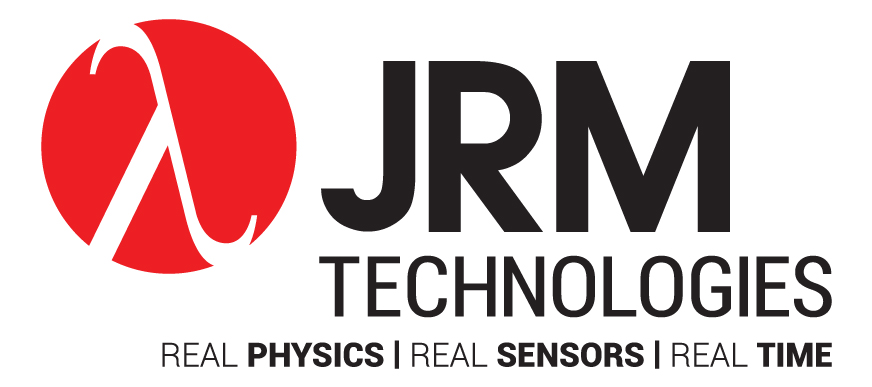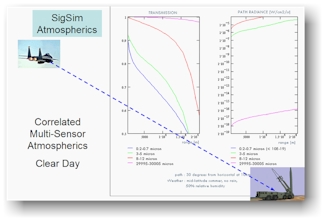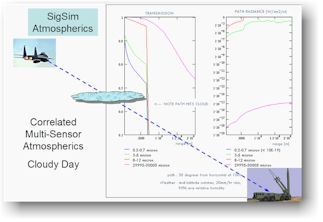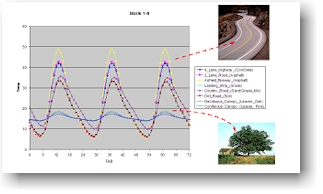SigSimRT
Signature & Atmospherics Library for Sensors & Out-the-Window Visuals
SigSimRT™ (see datasheet) is an advanced signature synthesis and atmospheric propagation runtime library for radiometrically-correct sensor displays and Out-the-Window (OTW) visuals. It provides on-the-fly physics-based modeling over the 0.2 - 25.0 µm spectrum (UV, visible, near-IR, thermal-IR) and for arbitrary RF frequencies. SigSimRT's ultra-fast algorithms and common material/property attributed Synthetic Environment make it ideal for real-time multi-sensor, OTW, CGF/SAF, and Hardware-In-The-Loop (HWIL) applications.
With SigSimRT, developers can upgrade their existing OTW IG or 3D simulation capability into radiometrically-correct spectral sensor simulations such as UV, NVG, FLIR and radar. Additionally, SigSimRT can make your existing OTW simulations physically correct for striking realism.
Natural & Man-made Source Modeling
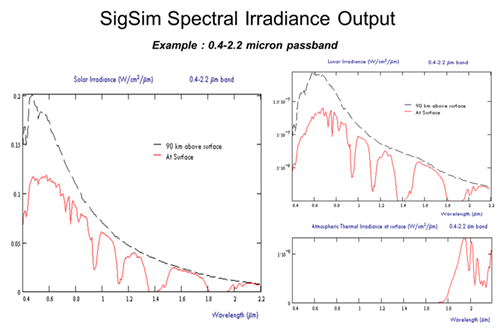 For any 3D location, time, date and atmosphere/weather condition, SigSimRT instantly provides all the natural source quantities necessary for accurate lighting, reflectance and thermal loading, including:
For any 3D location, time, date and atmosphere/weather condition, SigSimRT instantly provides all the natural source quantities necessary for accurate lighting, reflectance and thermal loading, including:
- Solar position, direct/diffuse spectral irradiance
- Lunar position/phase, direct/diffuse spectral irradiance
- Stellar constellation positions and spectral irradiances
- Downwelling sky and cloud spectral irradiances
- Upwelling earthshine spectral irradiance
In addition, SigSimRT instantly provides the correct spectral radiance from man-made light sources, including tungsten, sodium, mercury, neon, and polymetallic lamps.
Atmospheric Propagation
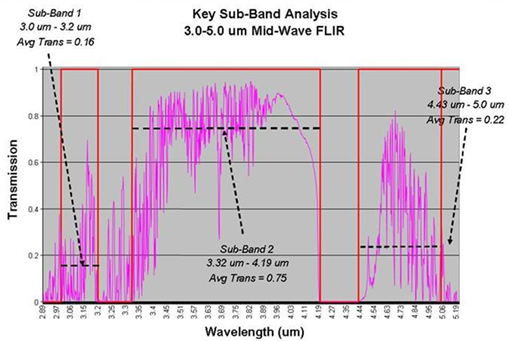 SigSimRT uses innovative, extremely-fast path-integral/transport algorithms based on Modtran & Radtran-atmospheric physics licensed from AFRL. These algorithms operate on a common atmospheric data model, allowing the user to assign such parameters as the pressure, temperature, molecular species concentrations and weather state at any position in the WGS-84 3D atmospheric model. SigSimRT allows changes in atmospheric state or weather conditions on-the-fly, and provides real-time updates for the source irradiances and LOS atmospherics. SigSimRT atmospherics modeling includes transmittance, thermal path radiance and scattering --all completely correlated across sensor bands for the correct relative behavior.
SigSimRT uses innovative, extremely-fast path-integral/transport algorithms based on Modtran & Radtran-atmospheric physics licensed from AFRL. These algorithms operate on a common atmospheric data model, allowing the user to assign such parameters as the pressure, temperature, molecular species concentrations and weather state at any position in the WGS-84 3D atmospheric model. SigSimRT allows changes in atmospheric state or weather conditions on-the-fly, and provides real-time updates for the source irradiances and LOS atmospherics. SigSimRT atmospherics modeling includes transmittance, thermal path radiance and scattering --all completely correlated across sensor bands for the correct relative behavior.
SigSimRT provides real-time OpenGL2.0 and Open Scene Graph (OSG) translation APIs for light source, signature and atmospherics constructs.
Common, Material/Property-Encoded Synthetic Environment
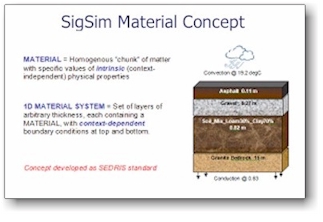 In addition to a common atmospheric data-model, SigSimRT employs a common terrain and object data-model with the innovative Material Systems Concept (supported in a SEDRIS EDCS). Material systems allow the assignment of material configurations from a comprehensive library, and associated boundary conditions to texels, vertices and/or facets in the database. In this manner, fast SigSimRT algorithms retrieve the intrinsic physical properties and conditions such as density, thermal conductivity, specific heat, BRDF, RCS, scatter-center tables, wind speed, engine-state, etc. to synthesize the correct passband signature for EO, IR or RF sensors.
In addition to a common atmospheric data-model, SigSimRT employs a common terrain and object data-model with the innovative Material Systems Concept (supported in a SEDRIS EDCS). Material systems allow the assignment of material configurations from a comprehensive library, and associated boundary conditions to texels, vertices and/or facets in the database. In this manner, fast SigSimRT algorithms retrieve the intrinsic physical properties and conditions such as density, thermal conductivity, specific heat, BRDF, RCS, scatter-center tables, wind speed, engine-state, etc. to synthesize the correct passband signature for EO, IR or RF sensors.
Thermal Emission & Reflectance
SigSimRT has ultra-fast, full-transient thermal model algorithms that respond on-the-fly to changes in boundary conditions, such as ambient wind-speed and air temperature, rain-rate, engine states, Mach number, time-of-day and surface-normal-dependent solar loading, sky loading, etc.
Responding to the time-of-day, atmospheric condition, weather and object states, SigSimRT gives the right thermal response. Therefore, SigSimRT correctly models effects such as the diurnal cycle phenomena of "thermal cross-over" at dusk and thermal inversion of vegetation with the background at night.
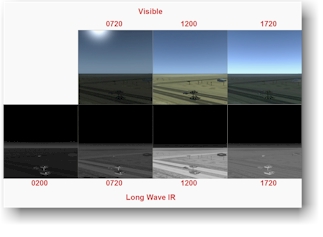
OpenGL and OSG Interface
SigSimRT provides easy-to-use data structures which can be used to directly supply OpenGL and OpenSceneGraph rendering engines with the scaled spectral or passband-integrated radiances, emissive contributions, and reflectivities; broken down into ambient, specular, and diffuse terms.
